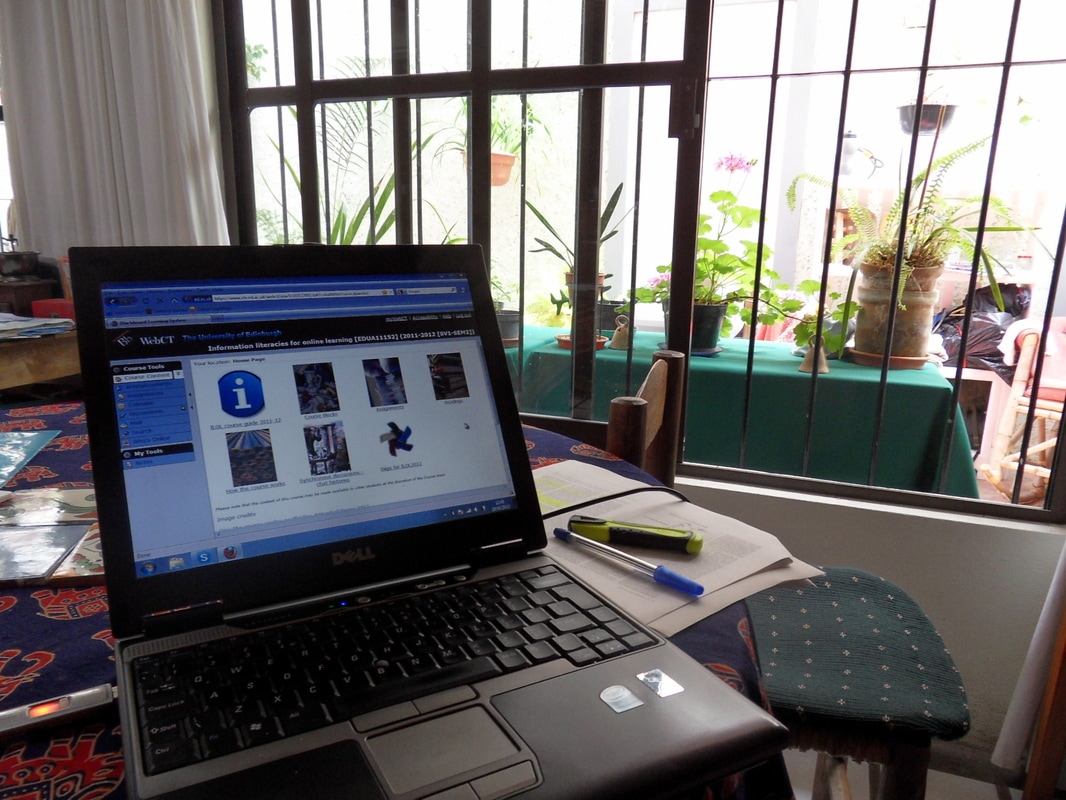|
Earlier today (25 April), Michael Sean Gallagher and I delivered a seminar discussing our research around the way that sound features within learning spaces. Our session was part of a series of events for tutors and others working within online education and was organised by the Institute of Academic Development here at Edinburgh University. The central argument of our seminar was that, through an attention to sound, we can better understand the ways that online students experience and construct space for learning, which in turn has implications for learning design and delivery. Our seminar drew on a journal article and then a book chapter we wrote with Sian Bayne, which built upon earlier work undertaken with our colleagues from the MSc in Digital Education. Towards the end of our presentation we spent a bit of time talking about how we have each gone on to use this methodology (which looks for coherence between visual and aural data) within our individual research around mobile learning (Michael) and digital literacy practices around assessment (my work). Here is a recording of the session, kindly provided by Celeste McLaughlin from the Institute of Academic Development, and here are the slides we used: Our work here should be seen in the context of growing critical interest in sound. This can be seen in a range of different disciplines and settings, including (but not limited to) Shcafer's work around Soundscape Studies (2012), Gandy and Nielsen's interest in the Acoustic City (2014), Fluegge's Consideration of Personal Sound Space (2011) to Van Leeuwen's discussion of the meaning carrying potential of Speech, Music and Sound from a social semiotic position (1999). With an attention to the research value of sound, we invited today's seminar participants to spend time listening and then reflecting upon the following aural representations of the learning spaces of online distance students. In each case the sound recording was submitted alongside an image and a short textual description, in what we called 'digital multimodal postcards'. Aggie's Learning Space in Xalapa, Mexico Elise's learning space in Port Harcourt, Nigeria Looking to my own research meanwhile, I am currently half-way through a data collection exercise where undergraduate students from courses in American History and in Architectural Design have similarly been creating and then sending me digital postcards. For a period of one week in the lead up to a coursework deadline, the students are recording their learning space on every occasion they work on the essay or design project. On this occasion I am particularly interested in the way that a 'sociomaterial lens' (Gourlay & Oliver 2013) offers insights into the digital literacy practices of students, as part of a wider meaning-making assemblage.
References:
2 Comments
20/2/2024 16:46:34
Your ongoing research involving undergraduate students from different courses offers a dynamic perspective on the digital literacy practices within specific academic contexts. The idea of using a 'sociomaterial lens' to gain insights into students' digital literacy practices is particularly compelling. It emphasizes the interconnectedness of the social and material aspects in the digital learning landscape. Thank you for sharing your expertise.
Reply
Leave a Reply. |
Search categories
All
I am a Lecturer in Digital Education (Education Futures), within the Centre for Research in Digital Education at The University of Edinburgh.
@james858499 [email protected] |


